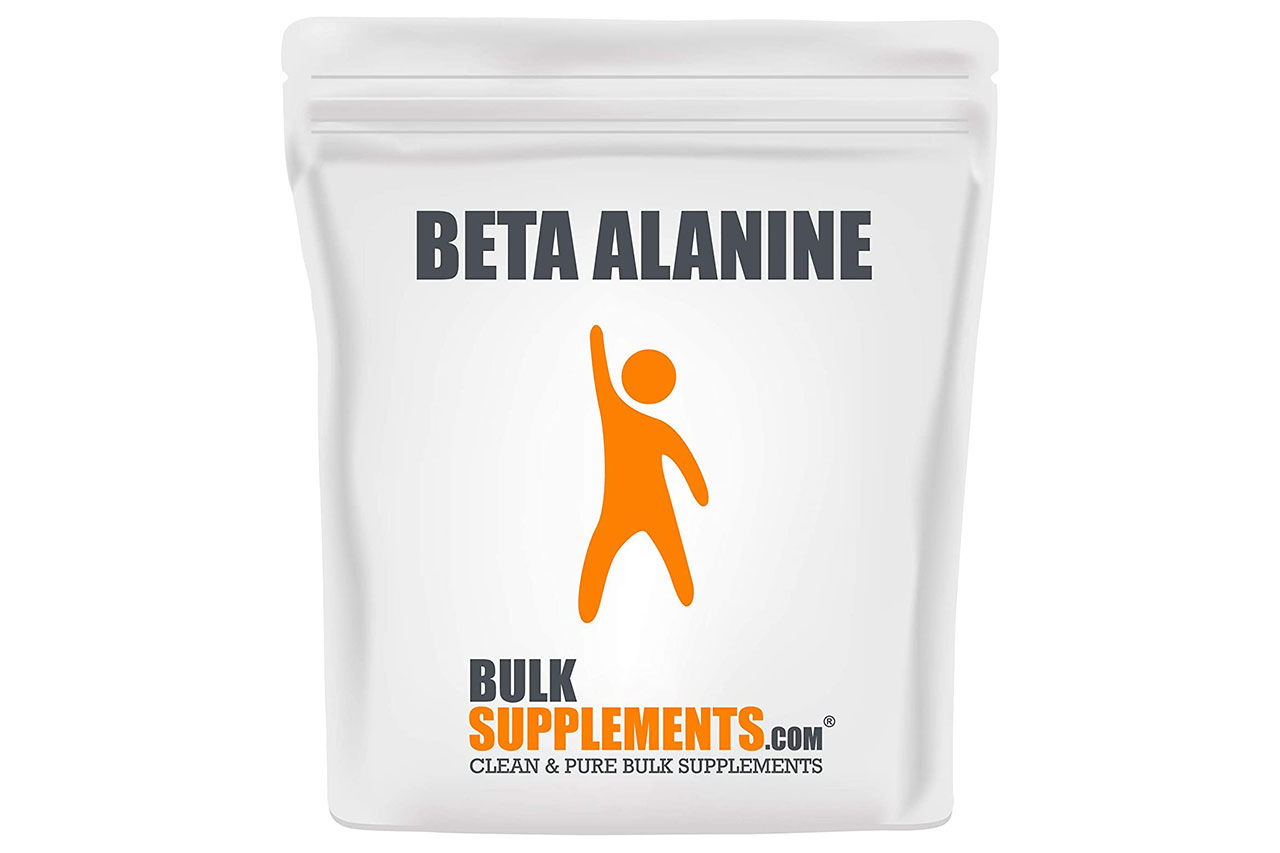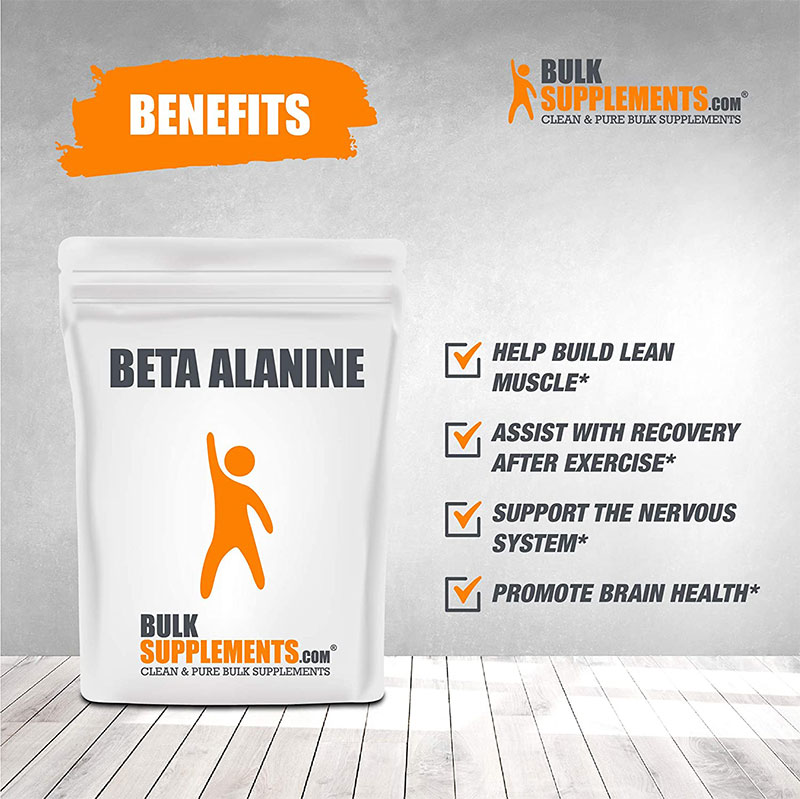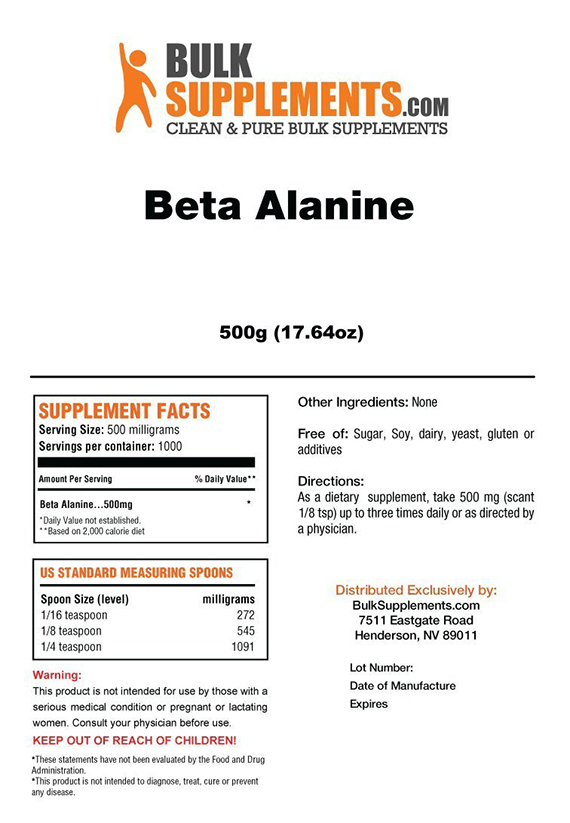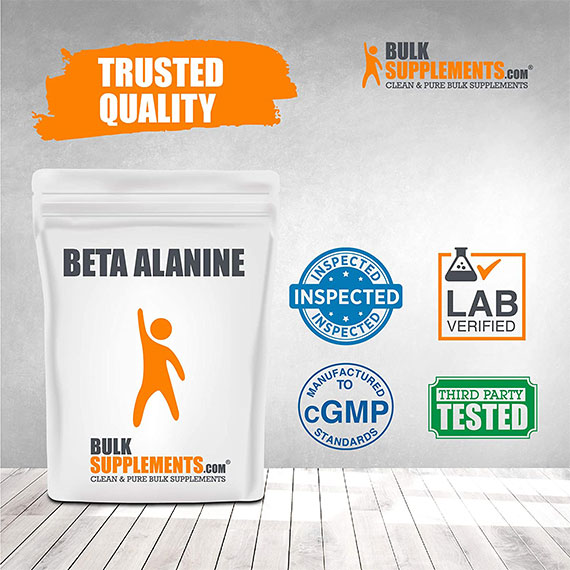We will look at two of the most popular amino acids for sports purposes – Taurine and Beta-Alanine. Often, we can see them together in complex formulas, and many consumers take them as part of their stack, but because of their metabolic features, their combined intake may not be as effective, and some are even contraindicated.
In sports supplements, a wide range of substances are used, many of which are amino acids. Amino acids are essential ingredients in pre-training and stimulant formulas, as well as in those aimed at recovery. Despite the scientific evidence of the action and effectiveness of many amino acids, some of them may interact negatively, resulting in suppression of properties or impairment of absorption.
What are Taurine and Beta-Alanine?
Taurine is a conditionally essential beta amino acid because it can be synthesized in the body by the amino acids methionine and cysteine with the cofactor vitamin B-6. Taurine contains sulfur and is the main building block of bile salts. Taurine, although it is called an amino acid, is not actually in the classical sense of the word because it is an acid containing an amino group.
Beta-Alanine is a natural beta amino acid that is not essential to the body. Unlike other amino acids, it is not involved in the synthesis of any major enzyme but is a potent precursor to the Carnosine Dipeptide. Beta-Alanine is formed in the body upon degradation of Carnosine and Dihydro-Uracil. Unlike Taurine, Beta-Alanine is not present in large amounts in the body because it is a non-essential element.
On the other hand, the major product of Beta-Alanine and Carnosine is contained in significant amounts in muscle tissue, and more specifically in type 2 muscle fibers. These are the so-called anaerobic muscle fibers responsible for strength, power and speed. Certain quantities of Carnosine are also present in the brain. Unlike Carnosine, the main concentrations of Taurine are in type 1 muscle fibers that are associated with aerobic loading and consumption of oxygen and Adenosine Triphosphate.
So, the concentration of the two substances is concentrated in completely different muscle tissues. Taurine is still contained in the retina and the central nervous system. In nature, both amino acids are found in food. Taurine is more readily synthesized in the human body, but it is often a deficiency, mainly due to the consumption of low-fat Taurine foods. This is more common with vegetarians and vegans, because the richest of Taurine foods are meat, dairy products and eggs.
Beta-Alanine is more difficult to form in the human body, so its main source is food. The richest sources of it are meat (especially veal) and fish. It is interesting to note that meat is a rich source of both Beta-Alanine and Taurine.
The basic metabolism problem
To complete their essential functions in the body, the amino acids are digested by passing through separate metabolic and transport pathways that are linked to a particular receptor. The main problem that occurs with simultaneous intake of Taurine and Beta-Alanine is that they use the same metabolic pathway that is dependent on the glycine receptor.
Glycine receptor is associated with the functioning of the nervous system because it functions as a receptor for the amino acid glycine that acts as a neurotransmitter. Glycine receptor is actually one of the most common in the central nervous system and performs a number of important functions, one of which is its action as a mediator of suppressive neurotransmissions in the brain and spinal cord.
A specificity of the glycine receptor is that it can be activated not only by glycine but also by other amino acids, including Taurine, Beta-Alanine but blocked by substances such as strychnine and caffeine. When the glycine receptor is activated, it is believed that a stronger agonist that affects more significantly the receptor will displace the rest and thus block their action.
In fact, one study calculated the effects on the glycine receptor by finding that the strongest agonist was glycine, followed by Beta-Alanine and finally, Taurine. Based on these assumptions, there is also the potential that, with simultaneous intake of Taurine and Beta-Alanine, the second will block the Taurine.
Correlated functions
It is considered that Taurine and Beta-Alanine are competitors that block each other by having functions in similar body systems, suggesting that their simultaneous intake would have a negative interaction and a negative impact on their effectiveness and function. One of the common features of the two amino acids is their association with GABA (Gamma-Aminobutyric Acid) and its receptor.
Beta-Alanine acts as an inhibitor of the output of the synapses neurotransmitter and thus increases its levels outside the cells. Taurine, in turn, enhances the action of the GABA receptor and acts as a potent neuromodulator in the GABA-nerve system. Thus, the two substances may also have potential synergistic effects with GABA. The two amino acids, including their dependent GABA neurotransmitter, are associated with the onset of diabetes.
Indeed, in the case of disease, there is a drastic decrease in plasma levels of Carnosine, Taurine and GABA, so their simultaneous intake would have a positive effect in the prevention or treatment of diabetes. In a study in rats suffering from diabetes, Beta-Alanine and Taurine were given within 7 weeks and a dramatic improvement in the condition was noted due to the positive effect on pancreatic beta-cells and insulin sensitivity.
Because the two amino acids are linked to the function of the nervous system, Taurine as a neuromodulator and an antioxidant, and Beta-Alanine as a neurotransmitter in the brain, they also affect behavior. Thus, with long-term intake of mice, Taurine records anti-depressant properties, while Beta-Alanine leads to anxious and restless behavior. The results for Beta-Alanine contradict other claims that bind Beta-Alanine intake with elevated GABA levels, resulting in a calming effect.
In vitro and in vivo studies demonstrate the importance of Taurine for cardiac function and the consequences of its deficiency. Taurine not only has strong antioxidant properties on cardiac tissues but also lowers blood pressure, regulates elevated calcium levels, has protective properties for ischemia and has potential benefits in the prevention of many heart diseases.
Tests on adult rats show that Taurine enhances antioxidant protection and reduces lipid peroxidation whereas Beta-Alanine decreases the levels of Taurine in heart cells and dramatically increases lipid peroxidation. Scientists conclude that high doses of Beta-Alanine can drastically reduce the levels of Taurine in cardiac myocytes and lead to strong activity of free radicals, especially radical superoxide.
This leads to breathing difficulties and lowering oxygen consumption. Other studies conducted on rats, show that Taurine is essential for the construction of the retina and photoreceptor structure. The use of Beta-Alanine only leads to abnormalities in the photoreceptor structure, so it is advisable to take it with Taurine. The two amino acids interact in the liver with increased alcohol intake.
When Beta-Alanine is added to alcohol, degraded performance is noted compared to alcohol alone. Beta-Alanine leads to a decrease in the levels of Taurine in the liver and to a significant increase in homocysteine and cysteine in the liver, and in bile acids and alkaline phosphatase in serum.
Concentration research and effects upon certain tissues
Taurine and Beta-Alanine are contained in different tissues, but their strongest concentrations are in nerve tissues, muscles, and heart. Studies show that the two amino acids affect differently in different types of tissues. At the same time, the results suggest that Taurine either lowers or does not change the concentration of Carnosine in the body.
The reason for this is that Taurine is a weaker glycine receptor agonist and does not affect the absorption of Beta-Alanine. While Taurine does not affect Beta-Alanine, the opposite cannot be fully confirmed. Most Beta-Alanine studies cover periods of no longer than three months, with doses varying between 4 and 8 grams per day. Within a similar intake of up to 12 months, there was a slight decrease in Taurine in muscle tissue.
Other studies also conclude that the two amino acids do not interact in muscle tissue, and the reason for this is that Beta-Alanine concentrations are mainly in type 2 muscle fibers and those of Taurine are in type 1. Some studies associate the increased Beta-Alanine intake with muscle cramps, which may not be associated with a decrease in Taurine levels in the muscles and is not a long-term effect. While the muscle tissue does not matter much, changes in the nerve cells and the heart may be noted.
With simultaneous administration of Taurine and Beta-Alanine, each of the amino acids inhibits the absorption of the other in neurons and astrocytes in the cerebral cortex. This indicates that they compete as neuromodulating agents on the central nervous system, and in particular the brain. This is the reason why the deficiency of one leads to behavioral abnormalities such as depression, nervousness or melancholy. In cardiac tissues, the two amino acids also influence each other.
While high levels of Taurine do not cause undesirable side effects, excessive intake of Beta-Alanine at high doses and over an extended period of time can lead to acute deficiency of Taurine in cardiac tissues, which is a prerequisite for heart disease. Since Taurine and Beta-Alanine are popular supplements in sports supplementation and have been used together in many formulas on the market, it is appropriate to ask whether they interact with one another at the same time, especially before training.
In this case, opinions can be expressed about their mutual suppression and ineffectiveness or lack of any barriers to their use in the general metabolic pathway at normal dosages resulting in optimized sports results due to the properties of the two amino acids. Currently there are no specific studies on the concomitant use of Taurine and Beta-Alanine for sports purposes.
Recommended combination intake
The problems associated with the administration of Taurine and Beta-Alanine are basically two. First of all, it is their simultaneous intake, which can lead to the two amino acids competing and blocking the absorption of one another.
This can happen with high doses, but if they are separated during the day or when moderate doses are consumed, the body has enough enzymes to be able to absorb certain amounts of both amino acids. Another variation is the separation of their intake during the day or the alternation during certain cycles.
If their intake is split, then Beta-Alanine should be taken at regular intervals and before workouts, while Taurine may be used after training and in the evening. Secondly, there is the problem of a possible long-term intake deficit. This would be the case with high doses of Beta-Alanine, which may cause Taurine deficiency, especially in cardiac tissues.
In this case, it is advisable to restrict Beta-Alanine up to 3 months and then rest. Also, the daily dose should not exceed 8 grams. For people with heart problems or those who want to take precautions together with Beta-Alanine, Taurine or its precursors such as Methionine, N-Acetyl Cysteine and Cysteine may be taken.




